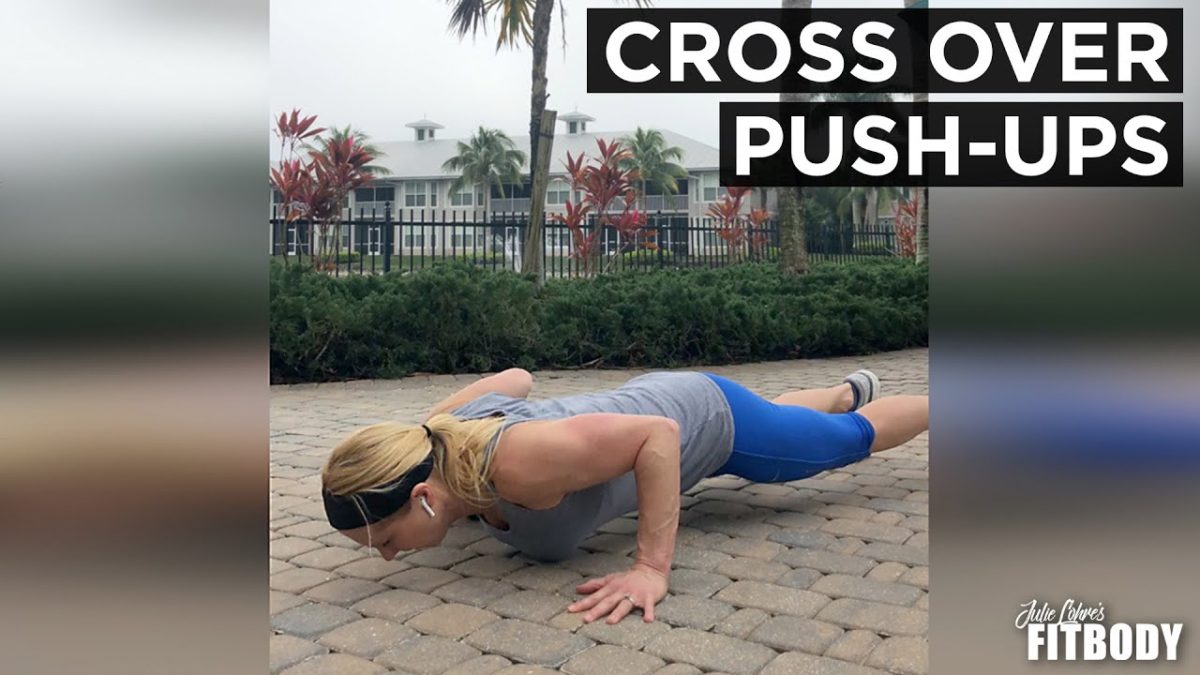Cross Over Pushups: A Dynamic Alternative to Cable Crossovers
If you are looking for a great chest exercise alternative to Cable Crossovers, I have a move that you can do at home with next to no equipment. The cross over pushup, is an innovative and effective exercise that offers a fresh twist on traditional pushups. This bodyweight exercise not only challenges your upper body in new ways but also enhances overall functional strength and muscle coordination. Perfect for those who prefer working out at home or outdoors without the need for specialized gym equipment, Cross Over Pushups are a must-try for anyone looking to spice up their fitness routine.
Muscles Targeted by Cross Over Pushups
What I love about Cross Over Pushups is that they are a multifaceted exercise that targets several muscle groups, making them an ideal choice for women seeking a comprehensive upper body and core workout. The primary focus of this exercise is on the pectoral muscles, which are crucial for pushing movements and overall chest development. As you perform the crossover motion, your pectorals are engaged dynamically, working against your body weight to provide resistance. In addition to the chest, the deltoids or shoulder muscles come into play, particularly as you stabilize your body during the cross-over motion. This stabilization not only works the main deltoid muscles but also engages the smaller stabilizing muscles around the shoulder joint, enhancing shoulder stability and strength.
Furthermore, Cross Over Pushups significantly involve the triceps, the muscles at the back of the upper arms. These muscles are essential for the extension of the elbow joint and play a key role in the pushing phase of the exercise. By involving the triceps, this variation of pushup ensures a balanced development of the upper arm, complementing the work done on the biceps by other exercises.
What sets Cross Over Pushups apart is the unique challenge they pose to the core muscles. The act of crossing one arm over the body demands extra work from the obliques and abdominal muscles. These core muscles are critical for maintaining a stable and aligned body position throughout the exercise. The involvement of the core goes beyond mere engagement – it requires these muscles to adapt and strengthen in response to the dynamic, asymmetric nature of the movement. This not only helps in developing a stronger, more defined core but also improves overall functional fitness, as a strong core is essential for almost every physical activity.
Cross Over Pushups offer a holistic workout experience that targets and tones the chest, shoulders, arms, and core. This makes them an incredibly efficient exercise for those looking to enhance upper body strength, improve posture, and build a strong, balanced physique.

Step-by-Step Guide to Performing Cross Over Pushups as a Cable Cross Over Alternative
- Starting Position: Begin in a standard pushup position with your hands placed slightly wider than shoulder-width apart and your body forming a straight line from head to heels. Have your right hand elevated slightly by grasping a dumbbell, left hand on the ground just under your left shoulder.
- The Left Pushup: Lower your chest to the ground while keeping your left hand stationary. Ensure your body remains in a straight line.
- The Cross Over Movement: As you push back up into a high plank, bring your left hand on to the dumbbell. Reach your right hand out to the side placing it on the ground, just under your right shoulder as you adjust your left hand on the dumbbell.
- The Right Pushup: Lower your chest to the ground while keeping your right hand stationary. Ensure your body remains in a straight line.
- Alternate Side: Repeat the movement, alternating sides with one push up on the left and one on the right counting as a full rep.








Benefits of Cross Over Pushups as a Cable Cross Over Alternative
- Enhanced Muscle Coordination: The cross-over motion demands coordination and balance, engaging more muscle groups.
- Increased Core Strength: The instability of moving your arms forces your core to work harder to stabilize your body.
- Accessibility: No equipment needed; can be performed anywhere.
- Variability: Easily modifiable for different fitness levels.
Watch Outs and Tips
- Form is Key: Maintain proper form to avoid strain on your wrists and shoulders. If the exercise is too challenging, start with knee pushups.
- Avoid Rushing: Perform each repetition slowly and with control to maximize muscle engagement and reduce the risk of injury.
- Listen to Your Body: If you experience pain beyond typical muscle fatigue, stop and consult with a fitness professional.
Find out more about Online Personal Training with Julie


